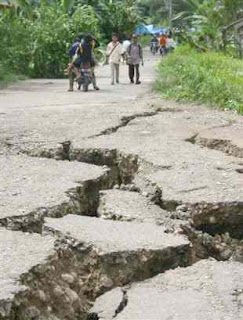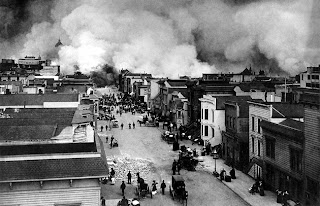
Planet Earth, our worthwhile & essential home, stores rich heritage of living species in all forms. Listen to the voice of the voiceless. Be the advocate of the helpless with their rights to live. Never doubt that a small caring group of thoughtful, committed citizens can change the world to a better world. Conservation is the key for survival. Protect Animals, Wildlife, Mother Nature! Extinction is forever. O.N.E.P.

Monday, December 6, 2010
Saturday, September 25, 2010
FLOODS. (PART 2)




Monday, September 20, 2010
FLOOD. (PART 1)



.jpg)
Sunday, September 19, 2010
TORNADO.



Monday, August 2, 2010
"THE AMAZON RAINFOREST." (PART 2)


Friday, July 16, 2010
"THE AMAZON RAINFOREST." (PART 1)
.jpg)


History. The rainforest was likely formed during the Eocene era, following the evolutionary appearance of angiosperm plants. It appeared following a global reduction of tropical temperatures when the Atlantic Ocean had widened sufficiently to provide a warm, moist climate to the Amazon basin. The rainforest has been in existence for at least 55 million years, and most of the region free of savannah-type biomes during that time period.
Following the Cretaceous-Tertiary extinction event, the extinction of the dinosaurs and the wetter climate may have allowed the tropical rainforest to spread out across the continent. There is evidence that there have been significant changes in Amazon rainforest vegetation over the last 21,000 years through the Last Glacial Maximum (LGM) and subsequent deglaciation. Analyses of sediment deposits from Amazon basin paleolakes and from the Amazon Fan indicate that rainfall in the basin during the LGM was lower than for the present, and this was almost certainly associated with reduced moist tropical vegetation cover the basin.
Based on archaeological evidence from an excavation at Caverna da Pedra Pintada, human inhabitants first settled in the Amazon region at least 11,200 years ago. The first European to travel the length of the Amazon River was Francisco de Orellana in 1542. The rainforest has been predicted to destroy itself and become a savannah sometime before 5,000,000 CE. While all the current animals (including present-day birds, insects, mammals, and reptiles) that inhabit the Amazon rainforest will be extinct by this date, new animals will evolve to take over the new savannah.
Biodiversity. Wet tropical forests are the most species-rich biome, and tropical forests in the Americas are consistently more species rich than the wet forests in Africa and Asia. As the largest tract of tropical rainforest in the Americas, the Amazonian rainforests have unparalleled biodiversity. One in ten known species in the world live in the Amazon Rainforest. This constitutes the largest collection of living plants and animal species in the world.
The diversity of plant species is the highest on Earth with some experts estimating that one square kilometer may contain over 75,000 types of trees and 150,000 species of higher plants. One square kilometer of Amazon rainforest can contain about 90,790 tonnes of living plants. The green leaf area of plants and trees in the rainforest varies by about 25% as a result of seasonal changes. Leaves expand during the dry season when sunlight is at a maximum, then undergo abscission in the cloudy wet season. These changes provide a balance of carbon between photosynthesis and respiration.
The rainforest contains several species that can pose a hazard. Among the largest predatory creatures are the Black Caiman, Jaguar and Anaconda. In the river, electric eels can produce an electric shock that can stun or kill, while Piranha are known to bite and injure humans. Various species of poison dart frogs secrete lipophilic alkaloid toxins through their flesh. There are also numerous parasites and disease vectors. Vampire bats dwell in the rainforest and can spread the rabies virus. Malaria, yellow fever and Dengue fever can also be contracted in the Amazon region. They could be deadly...Be careful!! Thank you for reading!! STARRY.
Sunday, July 4, 2010
HAPPY INDEPENDENCE DAY, THE 4TH OF JULY!!

If you wish to visit an inspirational and patriotic Christian American Website with outstanding Video-Poems and wonderful messages, I´ll give you the link. Don´t miss the Patriotic Gallery!!
Saturday, July 3, 2010
TRIBUTE TO COROLLA WILD HORSES OF THE OUTER BANKS.




"Hurricanes and Tropical Storms."


Tuesday, May 18, 2010
"Anatomy of an Earthquake." (Part 3)

"Anatomy of an Earthquake." (Part 2)

Monday, May 17, 2010
"Anatomy of an Earthquake." (Part 1)



Sunday, April 11, 2010
"The Ozone Layer."

Monday, March 22, 2010
"Global Warming."

"THE NEW GUINEA SINGING DOG."

WELCOME TO ANIMAL´S ADVOCATES WORLDWIDE!!
The New Guinea Singing Dog is a beautiful and intelligent primitive dog in a way to extinction.
I would love to help them!! Perhaps, the animal´s advocates worldwide could do something good to save them from extinction. Unfortunately, extinction is forever.
The New Guinea Singing Dog (Canis lupus hallstromi), known as NGSD, New Guinea Highland Dog, or Singer, is a type of wild dog that is native to New Guinea. Singers are classified as subspecies of Canis lupus and related to Australian Dingo. Singers have remained isolated from other dogs for almost 6,000 years, making them possibly the oldest of the pariah dogs. Today the dwindling wild populations still exist in the Highlands, all that remain of the breed which is thought to have once inhabited the whole of the Island of New Guinea. No confirmed sightings had been reported for years until recently. At least one animal was reportedly sighted by local guides at Lake Tawa. In 1995, the entire captive population was estimated at approximately 300, but today there are may be as few as 100 to 200 or even less numbers. They are exceptionally intelligent, but hard to keep because of wild behavioural traits. However, with proper training and socialization, they will live with humans in a "home" environment. Singers are recognized by Zoo´s worldwide of dogs with great health, for their lifespan is between 15 to 20 years long with no health issues. They are also recognized as a breed by the United Kennel Club, which places them in the Sighthound & Pariah Group. New Guinea Singing Dogs are unique in their ability to howl in a wolf-like manner, but unlike wolves, Singers can modulate the pitch, hence their name. Singers may sing many different songs all together in harmony.
It´s amazing!!... Thank you for reading my blogs!! If you wish to visit all MY BLOGS, I´ll include the LINKS where you may just CLICK:
www.thanksforthegiftoflife.blogspot.com
www.findthewayinyourlife.blogspot.com
www.theexistenceofournaturalenvironment.blogspot.com
www.sissyladoncelladelalba.blogspot.com
www.larosaenelvientodeltiempo.blogspot.com
WELCOME TO ANIMAL´S ADVOCATES WORLDWIDE!!
WELCOME TO MY WORLD!!
STARRY DAWN.













.jpg)






